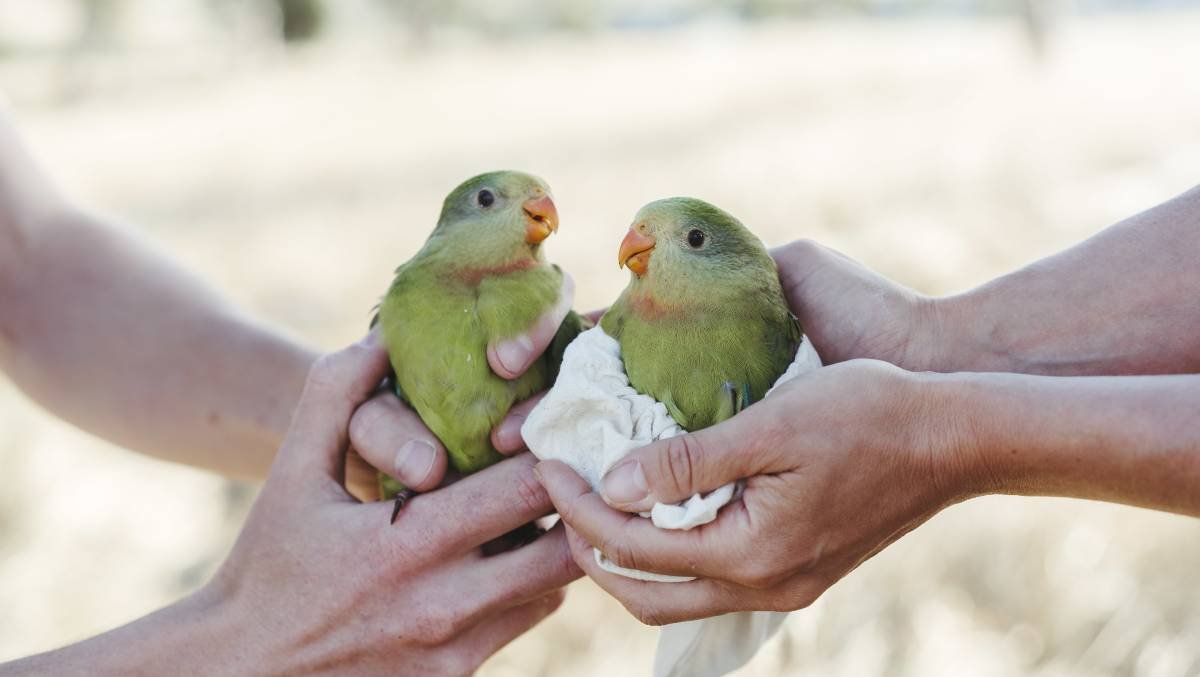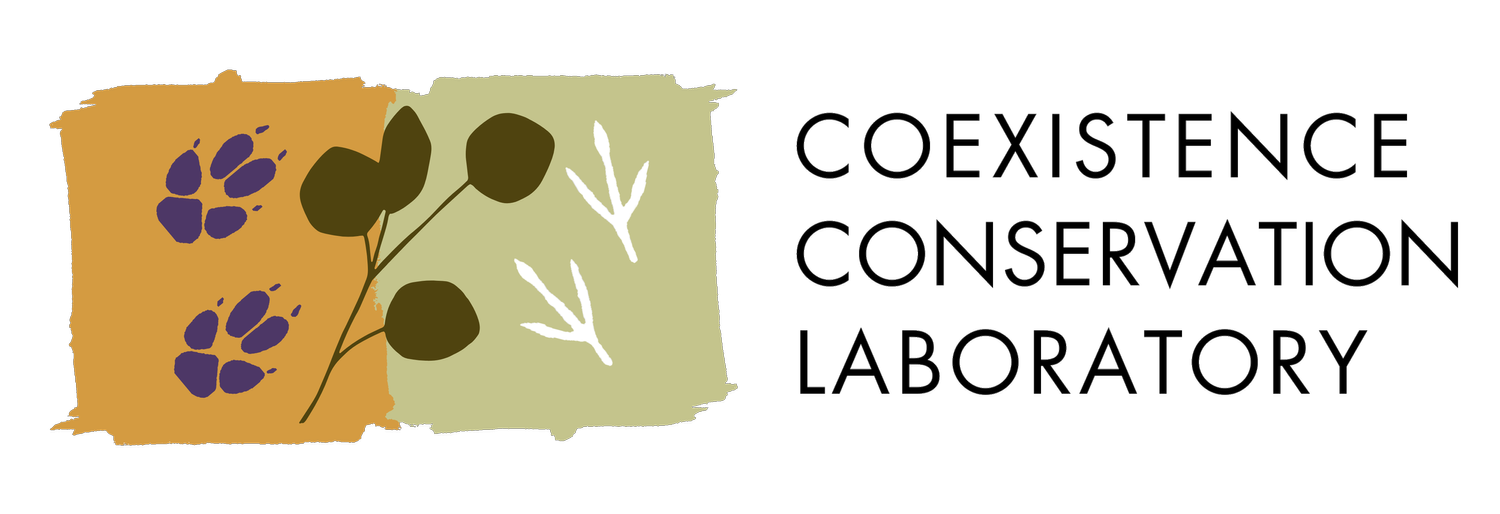
Conservation biology
Conservation needs evidence
Conservation biology is the field concerned with preserving species, ecosystems, and their functions (e.g., pollination, filtration, etc.).
It is the overarching theme for all research into how to restore, or maintain the persistence of, biodiversity.
The evidence derived from conservation biology research underpins the protections and management activities that prevent extinctions and maintain the ecosystems we all rely on.
Publications under this theme
Cobden et al. (2023) High nest survival, but variable reproductive output in the Superb Parrot (Polytelis swainsonii). Emu, 123(1): 14—23.
Shokirov et al. (2023) Habitat highs and lows: Using terrestrial and UAV LiDAR for modelling avian species richness and abundance in a restored woodland. Remote Sensing of Environment, 285: 113326.
Stojanovic et al. (2023) Reproductive skew in a Vulnerable bird favors breeders that monopolize nest cavities. Animal Conservation, 26: 675–683.
Stojanovic et al. (2021) Suitable nesting sites for specialized cavity dependent wildlife are rare in woodlands. Forest Ecology and Management, 483: 118718.
Evans et al. (2020) Beyond the pond: Terrestrial habitat use by frogs in a changing climate. Biological Conservation, 249: 108712.
Evans et al. (2019) Beetle ecological indicators – a comparison of cost vs reward to understand functional changes in response to restoration actions. Ecological Indicators, 104: 209—218.
Ringma et al. (2019) Systematic planning can rapidly close the protection gap in Australian mammal havens. Conservation Letters, 12(1): e12611.
Le Roux et al. (2018) The value of scattered trees for wildlife: Contrasting effects of landscape context and tree size. Diversity and Distributions, 24(1): 69—81.
Radford et al. (2018) Degrees of population-level susceptibility of Australian terrestrial non-volant mammal species to predation by the introduced red fox (Vulpes vulpes) and feral cat (Felis catus). Wildlife Research, 45(7): 645—657.
Barton et al. (2017) Environmental and spatial drivers of spider diversity at contrasting microhabitats. Austral Ecology, 42(6): 700—710.
Hamonts et al. (2017) Effects of ecological restoration on soil microbial diversity in a temperate grassy woodland. Applied Soil Ecology, 117: 117—128.
Ross et al. (2017) Fine-scale drivers of beetle diversity are affected by vegetation context and agricultural history. Austral Ecology, 42(7): 831—843.
Barton et al. (2016) Substantial long-term effects of carcass addition on soil and plants in a grassy eucalypt woodland. Ecosphere, 7(10): e01537.
Howland et al. (2016) Birds of a feather flock together: Using trait-groups to understand the effect of macropod grazing on birds in grassy habitats. Biological Conservation, 194: 89—99.
Macdonald et al. (2015) Can coarse woody debris be used for carbon storage in open grazed woodlands? Journal of Environmental Quality, 44(4): 1210—1215.
Rayner et al. (2015) Avifauna and urban encroachment in time and space. Diversity and Distributions, 21(4): 428—440.
Barton et al. (2014) Contrasting diversity dynamics of phoretic mites and beetles associated with vertebrate carrion. Experimental and Applied Acarology, 63(1): 1—13.
Howland et al. (2014) Eaten out of house and home: Impacts of grazing on ground-dwelling reptiles in Australian grasslands and grassy woodlands. PLOS One, 9(12): e105966.
Ikin et al. (2014) Bird community responses to the edge between suburbs and reserves. Oecologia, 174(2): 545—557.
Le Roux et al. (2014) Reduced availability of habitat structures in urban landscapes: Implications for policy and practice. Landscape and Urban Planning, 125: 57—64.
Le Roux et al. (2014) The future of large old trees in urban landscapes. PLOS One 9(6): e99403.
Lindenmayer et al. (2014) New policies for old trees: Averting a global crisis in a keystone ecological structure. Conservation Letters, 7(1): 61—69.
Macdonald et al. (2014) Carrion decomposition causes large and lasting effects on soil amino acid and peptide flux. Soil Biology and Biochemistry, 69: 132—140.
Manning et al. (2014) New evidence of late survival of beaver in Britain. Holocene, 24(12): 1849—1855.
Rayner et al. (2014) Evaluating empirical evidence for decline in temperate woodland birds: A nationally threatened assemblage of species. Biological Conservation, 171: 145—155.
Rayner et al. (2014) Are protected areas maintaining bird diversity? Ecography, 37(1): 43—53.
Azhar et al. (2013) Contribution of illegal hunting, culling of pest species, road accidents and feral dogs to biodiversity loss in established oil-palm landscapes. Wildlife Research, 40(1): 1—9.
Azhar et al. (2013) The influence of agricultural system, stand structural complexity and landscape context on foraging birds in oil palm landscapes. Ibis, 155(2): 297—312.
Barton et al. (2013) The role of carrion in maintaining biodiversity and ecological processes in terrestrial ecosystems. Oecologia, 171(4): 761—772.
Barton et al. (2013) Species traits predict assemblage dynamics at ephemeral resource patches created by carrion. PLOS One, 8(1): e53961.
Barton et al. (2013) The spatial scaling of beta diversity. Global Ecology and Biogeography, 22(6): 639—647.
Ikin et al. (2013) Pocket parks in a compact city: How do birds respond to increasing residential density? Landscape Ecology, 28(1): 45—56.
Ikin et al. (2013) The influence of native versus exotic streetscape vegetation on the spatial distribution of birds in suburbs and reserves. Diversity and Distributions, 19(3): 294—306.
Manning et al. (2013) Hollow futures? Tree decline, lag effects and hollow-dependent species. Animal Conservation, 16(4): 395—403.
Ikin et al. (2012) Linking bird species traits to vegetation characteristics in a future urban development zone: Implications for urban planning. Urban Ecosystems, 15(4): 961—977.
Stagoll et al. (2012) Large trees are keystone structures in urban parks. Conservation Letters, 5(2): 115—122.
Azhar et al. (2011) The conservation value of oil palm plantation estates, smallholdings and logged peat swamp forest for birds. Forest Ecology and Management, 262(12): 2306—2315.
Barton et al. (2011) Morphological traits as predictors of diet and microhabitat use in a diverse beetle assemblage. Biological Journal of the Linnean Society, 102(2): 301—310.
Barton et al. (2011) Experimental reduction of native vertebrate grazing and addition of logs benefit beetle diversity at multiple scales. Journal of Applied Ecology, 48(4): 943—951.
Barton et al. (2010) Fine-scale heterogeneity in beetle assemblages under co-occurring Eucalyptus in the same subgenus. Journal of Biogeography, 37(10): 1927—1937.
Manning et al. (2010) Could native scots pines (Pinus sylvestris) still persist in northern England and southern Scotland?. Plant Ecology and Diversity, 3(2): 187—201.
Stagoll et al. (2010) Using bird-habitat relationships to inform urban planning. Landscape and Urban Planning, 98(1): 13—25.
Barton et al. (2009) Conserving ground-dwelling beetles in an endangered woodland community: Multi-scale habitat effects on assemblage diversity. Biological Conservation, 142(8): 1701—1709.
Manning & Lindenmayer (2009) Paddock trees, parrots and agricultural production: An urgent need for large-scale, long-term restoration in south-eastern Australia. Ecological Management and Restoration, 10(2): 126—135.
Gibbons et al. (2008) The future of scattered trees in agricultural landscapes. Conservation Biology, 22(5): 1309—1319.
Manning et al. (2007) Large-scale spatial and temporal dynamics of the vulnerable and highly mobile superb parrot. Journal of Biogeography, 34(2): 289—304.
Fischer et al. (2006) Biodiversity, ecosystem function, and resilience: Ten guiding principles for commodity production landscapes. Frontiers in Ecology and the Environment, 4(2): 80—86.
Manning et al. (2006) Scattered trees are keystone structures - Implications for conservation. Biological Conservation, 132(3): 311—321.
Manning et al. (2006) Multi-scale site and landscape effects on the vulnerable superb parrot of south-eastern Australia during the breeding season. Landscape Ecology, 21(7): 1119—1133.
Manning et al. (2005) A bioclimatic analysis for the highly mobile Superb Parrot of south-eastern Australia. Emu, 105(3): 193—201.
Manning et al. (2004) The conservation implications of bird reproduction in the agricultural matrix: A case study of the vulnerable superb parrot of south-eastern Australia. Biological Conservation, 120(3): 363—374.


